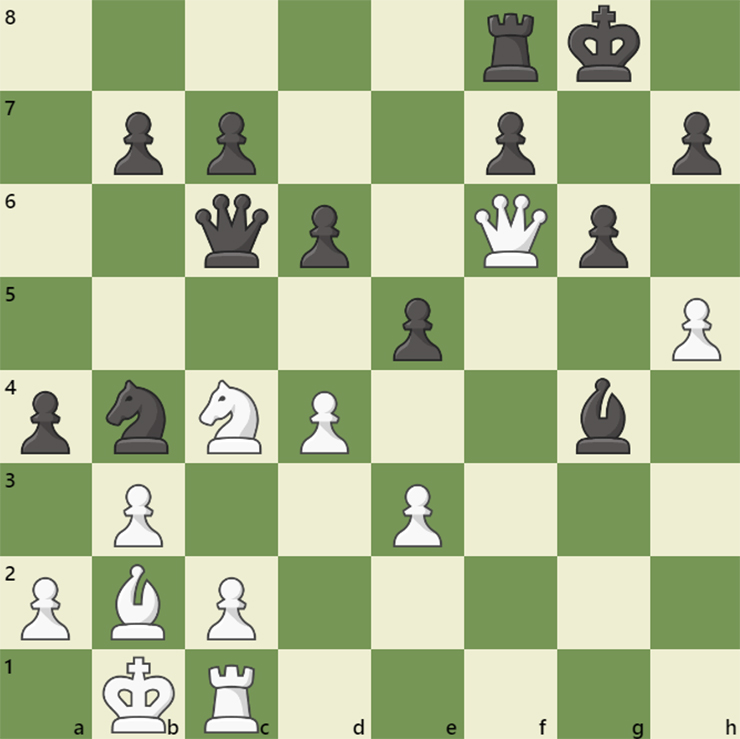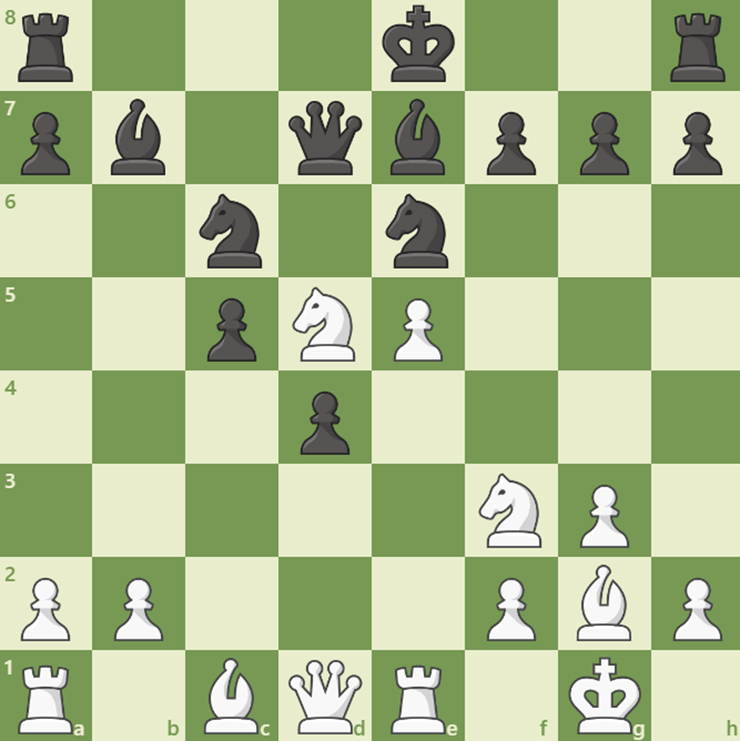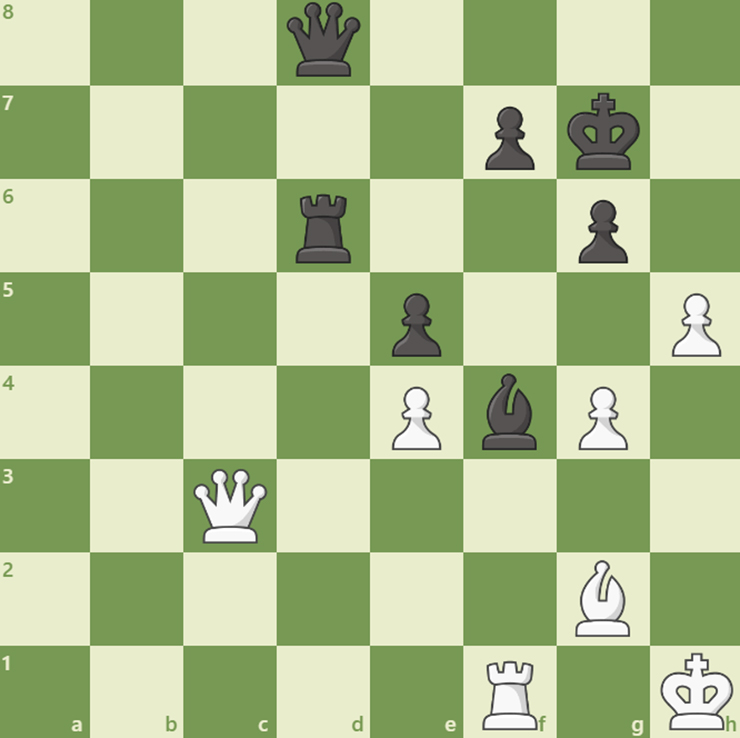
In chess, color complexes are the light and dark squares that dictate control over regional diagonals across the board. Weakening color complexes in one’s opponent’s territory can create critical positional vulnerabilities that can be tactically taken advantage of. This idea is demonstrated in Figure 1, a position in which black is up two pawns with a fairly solid position. However, because the g pawn has been pushed to g6 while the other kingside pawns remain on the 7th rank, black is left with gaping dark-squared weaknesses. With every local pawn on a light square and protecting light squares, the dark squares are extremely susceptible to white’s advance. Therefore, white simply wins with the move pawn to h6, exploiting the dark squared gaps to penetrate the king’s protection and hit g7, a square that only the black king defends. Because no other piece can protect the g7 square in time, no matter what move black makes, white will have queen to g7 checkmate winning the game.

The position shown in Figure 2 is from a game between Grandmasters Ahmed Adly with white and Viktor Laznicka with black from the 2007 World Junior Championship. They have only recently begun transitioning into the middlegame stage of the game and Adly began with 1. Nd2, an intelligent backwards knight transfer to open the light-squared bishop and prepare to move the knight to a stronger home, likely on e4 or c4, from which it will pressure black’s territory. 1… Nb4 2. Nxe7 Bxg2 3. Nf5, refraining from capturing the bishop to instead keep the knight that can attack black’s kingside and its weak dark squares due to the lack of a dark-squared bishop. 3… Bd5 4. Ne4, continuing the knight transfer d2 to e4 where the knight has central prominence, access to d6, a particularly weak dark square deep in the black position as both knights and threatens (5. Nxg7 Nxg7 6. Nf6+), removing the defender to fork the king and queen. To prevent this outcome, Laznicka moved his king out of the checking zone with 4… Kf8 5. a3 Nc6 6. Qh5, a mistake that attempts to pressure the kingside and activate the queen but allows black to take the advantage with (6…Bxe4 7. Rxe4 g6 8. Qh6+ Kg8) and white’s mounting pressure fizzles out into an initiative for black. However, Laznicka missed this opportunity and continued with a mistake of his own: 6…d3, a relatively inconspicuous move that loses to the brilliant sacrifice 7. Nf6+. The only winning move, Nf6+, completes the knight transfer by giving itself up to severely weaken and open the dark squares on the black kingside. 7… gxf6 8. Qh6+ kg8 9. gxf6 and white completely dominates the critical dark squares around the black king. 9… Re8 and Adly found the intelligent idea 10. Bf4, a crushing move that exploits the devastating weaknesses in the dark-squared complexes across the black territory as the bishop prepares to plant itself on d6 from which it cannot be removed, enclosing the king in the corner so the queen no longer would have to cover f8. 10… Rc8 11. Bd6 Nd4 12. Qg7 and black resigned after the final, sacrificial flourish as after (12… Nxg7), white would win with (13. Nh6#), galloping to the undefended dark, h6 square to smother-mate the black king.

Figure 3 is from a game between Israeli Grandmaster Boris Gelfand with white and the 2016 World Chess Championship Challenger Sergey Karjakin with black from the 2008 Amber Tournament, a blindfold chess competition. Material is equal but the players have different color bishops, often a critical advantage for the attacking player as the opponent’s bishop cannot defend the squares that theirs attacks, as Karjakin exhibits in this game. The winning move that Karjakin found is to first play rook to d3, hitting the white queen but most importantly defending the g3 square. This is seen after Gelfand continued with queen to e1, allowing bishop to g3 with initiative, also hitting the queen but also serving another, primary purpose of controlling the indefensible dark squares around the white king. With black having conquered the kingside dark squares and prepared to utilize them to launch a devastating attack, Gelfand resigned after pawn to h6, king to h8 as white is completely helpless to the incoming black invasion through white’s lethally weak dark squares.

The position shown in Figure 4 is a game from the 1962 USSR Championship with Grandmaster Viktor Korchnoi with white against former World Champion Mikhail Tal with black. Material is equal but both sides have connected pawns charging down the opponent’s side of the board. Korchnoi is close to fully advancing his passed pawns but Tal is seemingly successfully blockading the promotion campaign with his light-squared bishop and queen, preventing the pawns from moving forward onto the light squares in front of them. Therefore, the winning move that Korchnoi found is to destroy the blockade by sacrificing his rook for the light-squared bishop with the move rook takes d7. After the queen recaptures, white has e6 and the advancing, connected passed pawns with initiative and the extremely weak kingside dark squares penetrated by white’s dark-squared bishop and queen are simply overwhelming. With Korchnoi completely winning, Tal went on to resign a few moves later.
Ethan Feder is a senior at Yeshivat Frisch, a chess enthusiast, instructor and player. The goal of his column is to teach and discuss chess concepts through example positions, high-level games and relevant puzzles, along with explanations. Feel free to contact him with any questions, suggestions or comments at [email protected].












